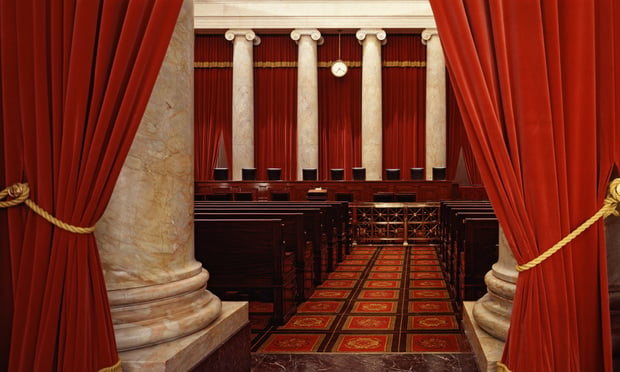 U.S. Supreme Court courtroom in Washington. Photo by Carol M. Highsmith/Library of Congress, via Wikimedia Commons
U.S. Supreme Court courtroom in Washington. Photo by Carol M. Highsmith/Library of Congress, via Wikimedia Commons
The U.S. Supreme Court handed down a 6-3 decision today that could have far-reaching and unpredictable effects on how federal agencies handle everything from health care and retirement benefits to combating air pollution.
The majority, in Roper Bright Enterprises v. Raimondo, found that the precedent established in the 1984 case Chevron v. Natural Resources Defense Council (which requires courts to defer to the actions of federal agencies unless the agency is unreasonably circumstantial) was unenforceable.
Chief Justice John Roberts wrote the majority opinion. Justice Elena Kagan wrote the three-justice dissenting opinion.
Some critics of the Chevron doctrine argue that because courts have avoided relying on it in recent years, overturning it would have little practical impact.
Justice Brett Kavanaugh suggested that reducing the executive branch’s ability to overturn past regulations if the party in the White House changes could lead to a more stable and less restrictive regulatory environment.
Justice Neil Gorsuch wrote in his concurring opinion that reliance on Chevron has forced courts to make decisions that are clearly unfair to plaintiffs in cases involving laws such as the Administrative Procedure Act.
In her dissent, Kagan predicted the Roper decision would have a major impact on litigation.
“Today, the majority wields exclusive power at one stroke over any unresolved question that touches on the meaning of regulatory law, whether that question is based on technical expertise or on policy,” Kagan wrote.
The ruling could affect efforts by the U.S. Department of Health and Human Services, which oversees Medicare, as well as efforts by other agencies to regulate financial markets and the use of artificial intelligence systems.
Federal agencies have used the Chevron principle to justify decisions that help health plans and insurers reduce costs. For example, HHS used it to defend its right to allow insurance issuers to decide whether to include drug company discounts in patients’ out-of-pocket costs.
Some health plans and insurers argue that forcing patients to use discount coupons could lead to them receiving expensive, unproven treatments, driving up premiums.
Social Security Disability Insurance Benefits
Gorsuch’s arguments in his concurring opinion suggest that the new ruling could have a particularly significant impact on people who use federal agencies’ administrative review systems, particularly those that review disability benefit determinations at Social Security and the Department of Veterans Affairs.
Gorsuch cited the case of Thomas Buffington, a U.S. Air Force veteran who was injured in the line of duty.
Gorsuch wrote that the VA used unfair rules to terminate Buffington’s benefits and then used the Chevron decision to thwart Buffington’s efforts to challenge that decision.

